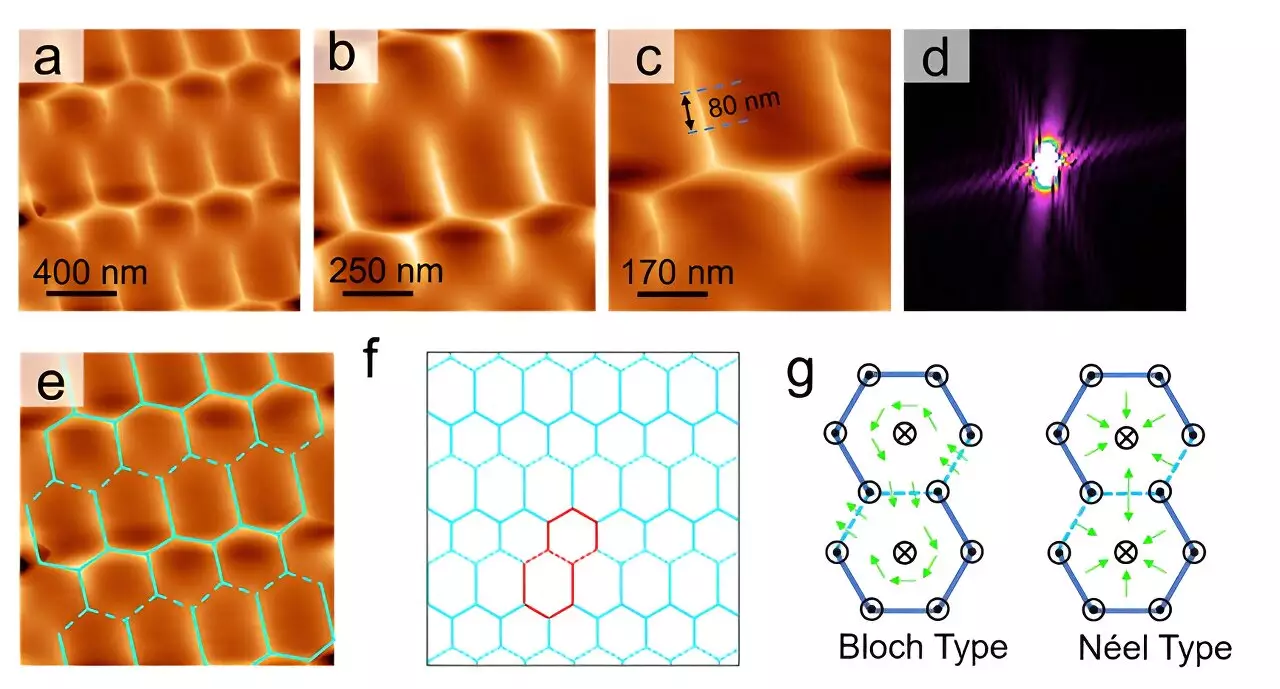Recent advancements in material science have unveiled a significant breakthrough concerning the intrinsic magnetic properties of kagome lattices, structures that play a pivotal role in modern physical research. Characterized by a unique arrangement resembling a woven bamboo pattern, kagome lattices exhibit a fascinating interplay of flat bands and Dirac points. This delicate balance creates a fertile ground for unusual phenomena such as topological magnetism and unconventional superconductivity, which are crucial for furthering our knowledge in fields like quantum computing and advanced material development.
A research team from China, guided by Professor Lu Qingyou at the Hefei Institutes of Physical Science, in partnership with Professor Xiong Yimin from Anhui University, recently published their findings in the esteemed journal Advanced Science on August 19. Utilizing cutting-edge techniques including magnetic force microscopy (MFM) and electron paramagnetic resonance spectroscopy, along with detailed micromagnetic simulations, the team successfully observed intrinsic magnetic structures within a kagome lattice framework. Their focus was on the binary kagome single crystal Fe3Sn2, which provided a rich environment for exploring uncharted magnetic configurations.
One of the most significant discoveries from this study was the identification of a lattice-modulated magnetic array forming a broken hexagonal structure. This structure emerged as a result of tension between hexagonal lattice symmetry and uniaxial magnetic anisotropy, shedding light on how intrinsic spin arrangements can manifest in these unique materials. The concept of topologically broken spin configurations enhances our understanding of the intricate relationships between lattice properties and magnetic behavior, laying the groundwork for future experimental avenues.
In conducting variable-temperature experiments, the researchers found that the magnetic reconstruction within Fe3Sn2 occurs through either a second-order or weak first-order phase transition, a novel finding that challenges previous theories that suggested a more abrupt first-order transition. Furthermore, their reassessment of the low-temperature magnetic ground state revealed it to be an in-plane ferromagnetic state, rather than the previously believed spin-glass state. This alteration in understanding broadens the scope of magnetic state classifications and encourages further investigation into thermal and magnetic dynamics in low-temperature regimes.
The new insights from this research culminated in the development of a novel magnetic phase diagram for Fe3Sn2, culminating in the revelation of persistent out-of-plane magnetic components at lower temperatures. Employing the Kane-Mele model, the researchers successfully explained the opening of a Dirac gap, which dismissed earlier theories regarding skyrmion presence under similar conditions. The implications of these findings extend beyond the realm of electrical engineering and physics; they pave the way for more profound explorations into topological magnetism and its transformative potential in quantum computing and high-temperature superconductivity.
This research not only proves critical to the academic community, but it also promises to generate impactful advancements in technology, redefining how we approach future innovations. The journey into the enigmatic world of kagome lattices is just beginning, and it holds the potential to unlock solutions to some of humanity’s most pressing technological challenges.


Leave a Reply